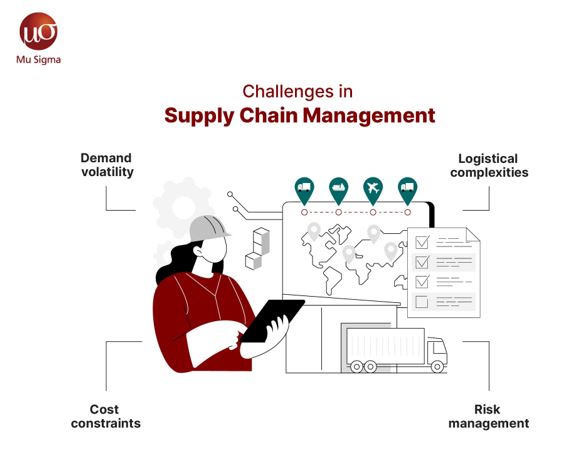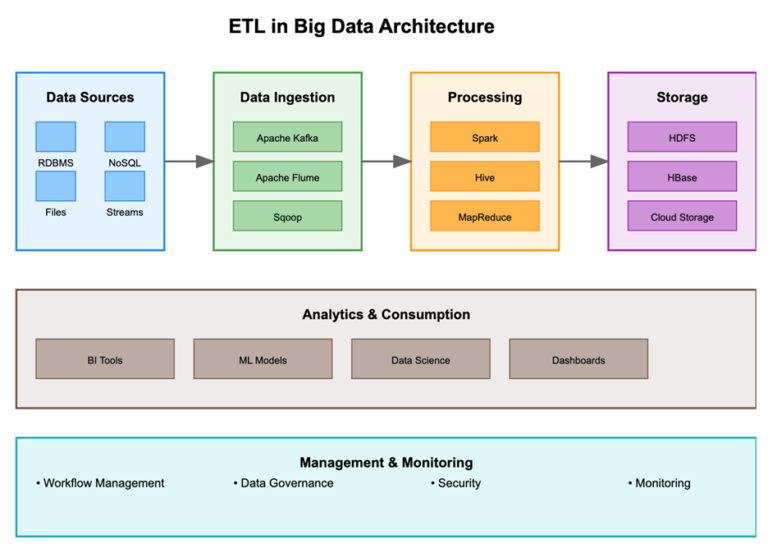The Role of Decision Science in Streamlining Supply Chain Management
In this age of a globalized, ever-more complex environment, all organizations face innumerable difficulties in managing their supply chains. The challenges range from unforecastable demand to disrupted supply networks with bottlenecks. Thus, it has become crystal clear that the capability to manage such chaos will make or break the profitability of the business enterprise. However, with decision science at hand, finally, organizations can finally have a sophisticated tool for their supply chains for better productivity, flexibility, and profitability.
This blog will explain in great depth how decision science is playing a transformational role in modern supply chain management and how it’s helping companies stay ahead of the curve.
The Challenges in Supply Chain Management
Supply chain management is never an easy task. It involves coordination between suppliers, manufacturers, distributors, and retailers across constantly changing market scenarios. The most common issues for any company include the following:
- Demand volatility: The fluctuating trend of consumer behavior coupled with economic instability makes demand patterns unpredictable.
- Logistical complexities: Increasing globalization brings along more variable factors related to transportation delays, fluctuating tariffs, and customs.
- Cost constraints: There is growing pressure to keep operational costs as low as possible without sacrificing one ounce of quality or speed.
- Risk management: Natural disasters, political strife, and pandemics all make the supply chain more unpredictable.
With so many moving parts, well-informed and timely decisions have to be made. That is where Decision Science comes into play, providing data-driven solutions to address such complexity.
How Decision Science Transforms Supply Chain Management
1. Optimizing Demand Forecasting
Demand forecasting is one of the most ‘critical’ elements in supply chain management. Most traditional methods of forecasting rely on historical data and linear models that can get extremely inadequate once volatility starts hitting the market. Advanced algorithms and machine learning models from decision science can process a huge amount of data and identify patterns that no human eye can see.
Analyzing historical sales, market trends, and external factors like economic indicators, decision science allows businesses to:
- Forecast demand with more accuracy: Improved forecasts reduce the risks of overproduction or stockouts while enabling superior service to customers.
- Enable improved inventory management: The same accurate forecast of demand will help the business optimize its levels of inventory, hence minimizing excess stock and thereby trimming holding costs.
- Improved customer satisfaction: Businesses will be able to keep customers happy through the fulfillment of promises by having the right products at the right time.
For example, Amazon uses data-driven demand forecasting models to anticipate customer orders with remarkable accuracy, ensuring they can deliver products quickly and efficiently.
2. Enhancing Supplier Selection and Relationship Management
Choosing the right suppliers is a very crucial part of successful supply management. It does this by applying advanced analytics with Decision Science to gauge supplier performance, understand risks, and make smarter purchasing decisions.
Using Decision Science, businesses can:
- Evaluate supplier reliability: Through historical data on past performances, companies can identify which supplier has been consistent in delivery schedules and quality criteria.
- Risk mitigation: Using Decision Science, external factors, such as geopolitical risks, natural calamities, and financial instability, may be evaluated, providing business decisions with informed choices and reasons for considering supplier base diversification.
- Better contracting: By having quality, data-driven insights, companies can understand the market trend in which they operate. Therefore, companies are capable of negotiating better terms with suppliers.
Businesses can use these kinds of insights to build more robust supplier relationships and ensure a more resilient supply chain.
3. Optimizing Logistics and Distribution
Logistics and distribution are the main parts of supply chain management but also tend to be the most liable areas concerning inefficiencies, delays, and high costs. Decision science uses analytics in routing, placing inventories, and modes of transportation to streamline such operations.
Some key benefits derived from this include:
Route Optimization: These models analyze traffic congestion, fuel prices, and projected delivery times, hence figuring out the best delivery routes that could reduce time and cost in transit.
Optimizing warehouses: Advanced algorithms can enable companies to determine the ideal location for warehouses and distribution centers. This decreases shipping costs and also ensures good delivery times.
Better transportation management: Through data analysis, businesses could conclude which mode of transport is cheaper—whether air, sea freight, or road freight.
UPS and FedEx apply decision science to optimize the network at UPS and FedEx to ensure that packages get promptly delivered at the least cost possible.
4. Reducing Costs Through Process Optimization
Efficiency is the name of the game in Supply Chain Management. Even small inefficiencies can lead to significant cost overruns and delays. Decision Science helps businesses identify areas where processes can be streamlined, leading to lower costs and faster delivery times.
- Lean operations: Analyzing production and supply chain data allows any business to identify the points of bottleneck and redundancies, thus applying lean principles to eliminate waste.
- Cost analysis: Decision Science models can calculate the total cost of ownership for products, helping businesses make informed decisions about sourcing, production, and distribution.
- Automation and AI: Data-driven insights allow companies to implement automation in areas like order processing, inventory management, and customer service, further reducing costs and improving efficiency.
5. Enhancing Risk Management and Resilience
The supply chains need to be strong enough to absorb any disruption in the uncertainty of today’s world. Decision science also plays an important role in mitigating risk. It identifies the risks and strategizes mitigations.
- Scenario planning: By simulating scenarios of natural disasters, bankruptcies of suppliers, or trade embargoes, for example, Decision Science lets businesses get prepared for disruptions by developing contingency plans.
- Risk assessment: Data models can quantify the probability and consequences of various risks, thus allowing a business to make informed decisions regarding where mitigation strategies should be invested.
- Real-time monitoring: With the use of Decision Science, businesses can view in real-time what is happening in their supply chain. The ability to spot potential disruptions earlier means an ability to act faster to reduce the impact.
Companies were able to make rapid responses against supply chain disruptions and kept their businesses running during the COVID-19 pandemic with the right application of decision science in scenario planning and risk management.
Conclusion
Decision science now has an increasingly vital role in developing supply chain management. Data analytics, predictive modeling, and insights into behavior—all help an organization optimize its supply chains, reduce costs, and minimize risks. From correct demand forecasting to improving logistics and better supplier management, the use of decision science offers potent tools to smoothen processes and drive profitability.
Companies leading in decision science will be better positioned to outcompete, adapt to the constant changes in the market landscape, and set themselves up for success long-term, given that the aftermath of a supply chain disruption could be anything.



